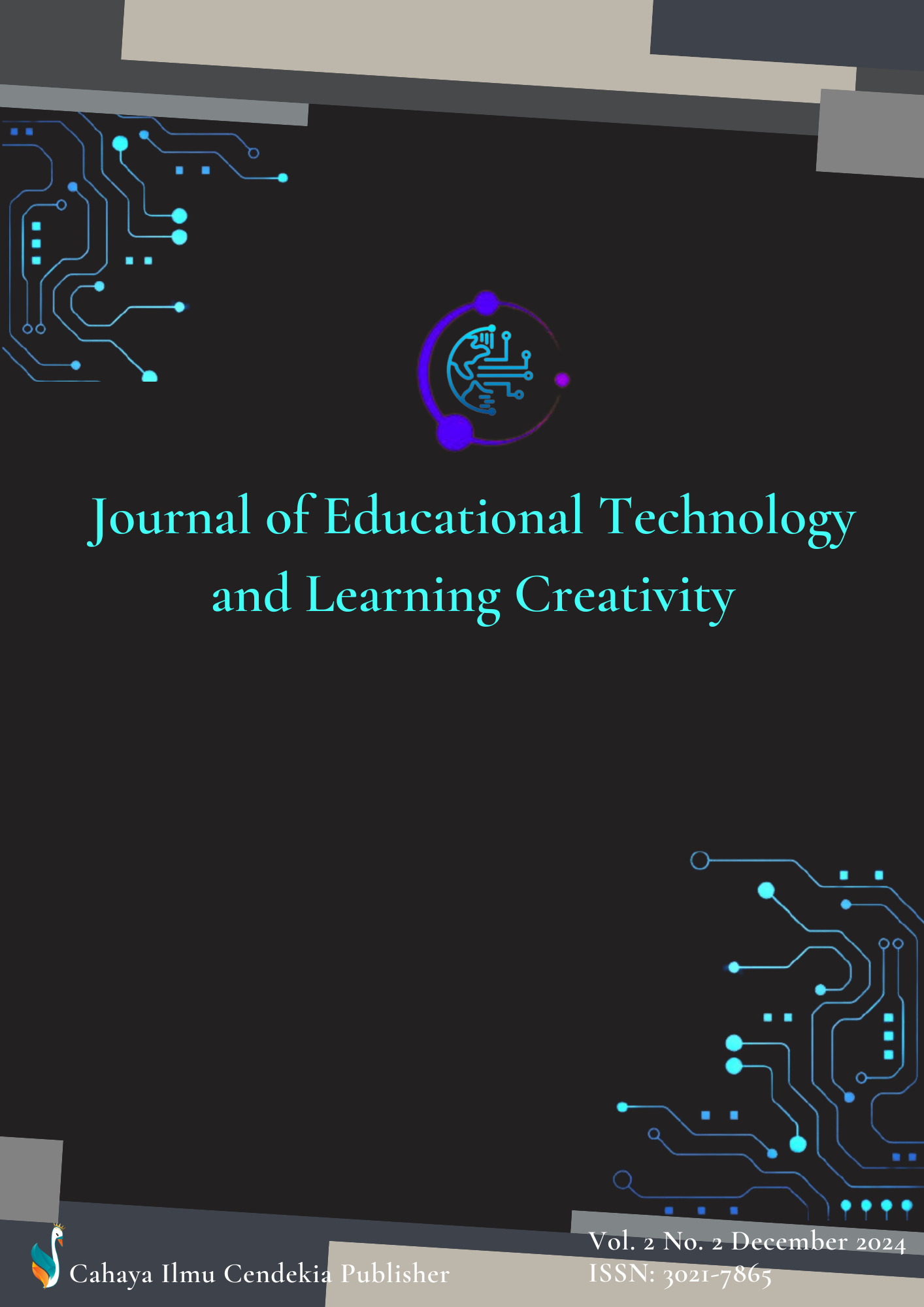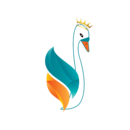Physics Learning Innovation: Song and Animation-Based Media as a Learning Solution for Mirrors and Lenses for Junior High School Students
Abstract
Purpose of the study: This study aims to develop and assess the effectiveness of a physics learning media based on songs and animations to enhance motivation and understanding among Grade VIII students on the topics of mirrors and lenses..
Methodology: The study employed a mixed-methods approach, utilizing a procedural development model by Borg and Gall. Tools and software used include Adobe Audition 1.5, Wondershare Filmora, and Adobe Flash CS6. Data collection methods included questionnaires and expert reviews.
Main Findings: The song and animation-based learning media received a "Very Valid" rating from content experts (90%) and a "Valid" rating from media experts (70%), with teachers giving an average score of 90%. The t-test results showed a significant increase in students' motivation in the experimental group, with a mean score of 79.50 compared to 68.07 in the control group, indicating the positive impact of the developed media.
Novelty/Originality of this study: This study introduces an innovative approach by combining musical and animated elements in physics education, thereby stimulating both the left and right brain hemispheres. This dual-hemisphere engagement fosters a more interactive and enjoyable learning experience, bridging the gap in traditional physics instruction by addressing both logical and creative aspects of student learning.
References
M. Gemnafle and J. R. Batlolona, “Manajemen pembelajaran,” J. Pendidik. Profesi Guru Indones., vol. 1, no. 1, pp. 28–42, 2021, doi: https://doi.org/10.30598/jppgivol1issue1page28-42.
E. Mulia, S. Zakir, C. Rinjani, and S. Annisa, “Kajian Konseptual Hasil Belajar Siswa dalam Berbagai Aspek dan Faktor yang Mempengaruhinya,” Dirasat J. Manaj. dan Pendidik. Islam, vol. 7, no. 2, pp. 137–156, 2021, doi: https://doi.org/10.26594/dirasat.v7i2.2648.
M. H. Khoiruddin, Z. Hazmi, Z. Baharin, M. S. Kaka, and S. Saenpich, “Development of visual novel games as learning media for the history of Indonesia ’ s independence,” J. Educ. Technol. Learn. Creat., vol. 1, no. 1, pp. 33–41, 2023, doi: 10.37251/jetlc.v1i1.622.
L. Markauskaite et al., “Rethinking the entwinement between artificial intelligence and human learning: What capabilities do learners need for a world with AI?,” Comput. Educ. Artif. Intell., vol. 3, no. July, 2022, doi: 10.1016/j.caeai.2022.100056.
J. E. R. Marantika, “Metacognitive ability and autonomous learning strategy in improving learning outcomes,” J. Educ. Learn., vol. 15, no. 1, pp. 88–96, 2021, doi: 10.11591/edulearn.v15i1.17392.
C. Rapanta, L. Botturi, P. Goodyear, L. Guàrdia, and M. Koole, “Online university teaching during and after the covid-19 crisis: refocusing teacher presence and learning activity,” Postdigital Sci. Educ., vol. 2, no. 3, pp. 923–945, 2020, doi: 10.1007/s42438-020-00155-y.
U. Hanifah, Z. Binti Adam, M. Faizin, I. Miftakhul Jannah, and Y. Hanafi, “Accelerating the digitalisation of learning post-COVID-19 era to improve the pedagogical competence of pre-service Arabic teachers,” Cogent Educ., vol. 11, no. 1, p., 2024, doi: 10.1080/2331186X.2024.2413241.
R. Anggraeni and R. Maryanti, “Implementation of video learning media in Islamic Religious Education subjects,” Indones. J. Multidiciplinary Res., vol. 1, no. 2, pp. 257–266, 2021, doi: 10.17509/ijomr.v1i2.37609.
M. Nelimarkka, T. Leinonen, E. Durall, and P. Dean, “Facebook is not a silver bullet for teachers’ professional development: Anatomy of an eight-year-old social-media community,” Comput. Educ., vol. 173, no. July 2020, p. 104269, 2021, doi: 10.1016/j.compedu.2021.104269.
N. M. A. S. P. Paramitha and I. N. S. Ardiyasa, “Peluang dan Tantangan Pengajaran Aksara Bali pada Siswa Multietnis,” Subasita J. Sastra Agama dan Pendidik. Bhs. Bali, vol. 2, no. 2, pp. 29–37, 2021.
A. Haleem, M. Javaid, M. Asim, and R. Suman, “Understanding the role of digital technologies in education : A review,” Sustain. Oper. Comput., vol. 3, no. February, pp. 275–285, 2022, doi: 10.1016/j.susoc.2022.05.004.
A. Tlili et al., “What if the devil is my guardian angel: ChatGPT as a case study of using chatbots in education,” Smart Learn. Environ., vol. 10, no. 1, 2023, doi: 10.1186/s40561-023-00237-x.
M. Saimon, Z. Lavicza, and T. (Noah) Dana-Picard, “Enhancing the 4Cs among college students of a communication skills course in Tanzania through a project-based learning model,” Educ. Inf. Technol., vol. 28, no. 6, pp. 6269–6285, 2023, doi: 10.1007/s10639-022-11406-9.
F. P. Sinaga, Jurhana, Yusrita, and M. Hidayat, “Analisis penggunaan metode mengajar (metode demonstrasi, metode eksperimen, metode inquiry, dan metode discovery di SMA Negeri 11 Kota Jambi),” Relativ. J. Ris. Inov. Pembelajaran Fis., vol. 5, no. 2, pp. 103–110, 2022, doi: https://doi.org/10.29103/relativitas.v5i2.7830.
B. Y. Wahyuningsih and M. A. Sunni, “Efektifitas Penggunaan Otak Kanan Dan Otak Kiri Terhadap Pencapaian Hasil Belajar Mahasiswa,” PALAPA, vol. 8, no. 2, pp. 351–368, 2020.
S. Rahayu, S. P. SD, and A. Vidya, Desain Pembelajaran Aktif (Active Learning). Ananta Vidya, 2022.
A. A. Pise, H. Vadapalli, and I. Sanders, “Estimation of Learning Affects Experienced by Learners: An Approach Using Relational Reasoning and Adaptive Mapping,” Wirel. Commun. Mob. Comput., vol. 2022, 2022, doi: 10.1155/2022/8808283.
J. E. P. van Leeuwen, J. Boomgaard, D. Bzdok, S. J. Crutch, and J. D. Warren, “More than meets the eye: art engages the social brain,” Front. Neurosci., vol. 16, no. February, pp. 1–19, 2022, doi: 10.3389/fnins.2022.738865.
Y. C. Chan, D. C. Zeitlen, and R. E. Beaty, “Amygdala-frontoparietal effective connectivity in creativity and humor processing,” Hum. Brain Mapp., vol. 44, no. 6, pp. 2585–2606, 2023, doi: 10.1002/hbm.26232.
M. Levstek, D. Elliott, and R. Banerjee, “Music always helps: Associations of music subject choices with academic achievement in secondary education,” Br. Educ. Res. J., vol. 50, no. 1, pp. 385–413, 2024, doi: 10.1002/berj.3928.
M. Janurik and K. Józsa, “Long-Term impacts of early musical abilities on academic achievement: a longitudinal study,” J. Intell., vol. 10, no. 3, 2022, doi: 10.3390/jintelligence10030036.
I. Capron Puozzo and C. Audrin, “Improving self-efficacy and creative self-efficacy to foster creativity and learning in schools,” Think. Ski. Creat., vol. 42, no. October, p. 100966, 2021, doi: 10.1016/j.tsc.2021.100966.
H. J. Lee and Y. Hwang, “Technology-enhanced education through VR-making and metaverse-linking to foster teacher readiness and sustainable learning,” Sustain., vol. 14, no. 8, 2022, doi: 10.3390/su14084786.
D. T. K. Ng, E. H. L. Ng, and S. K. W. Chu, “Engaging students in creative music making with musical instrument application in an online flipped classroom,” Educ. Inf. Technol., vol. 27, no. 1, pp. 45–64, 2022, doi: 10.1007/s10639-021-10568-2.
G. Waddell and A. Williamon, “Technology use and attitudes in music learning,” Front. ICT, vol. 6, no. MAY, pp. 1–14, 2019, doi: 10.3389/fict.2019.00011.
H. Alfadda, M. Afzaal, H. Mahdi, R. Alaudan, and S. Curle, “Influence of psychological autonomy support of peer instruction: A novel interactive approach using Instagram in language learning,” Front. Psychol., vol. 13, no. September, pp. 1–12, 2022, doi: 10.3389/fpsyg.2022.866354.
F. N. Astuti, S. Suranto, and M. Masykuri, “The appropriateness of developing the media: Experts’ validation and students’ response of learning media based on augmented reality technology for natural science lesson,” J. Phys. Conf. Ser., vol. 1567, no. 4, 2020, doi: 10.1088/1742-6596/1567/4/042023.
C. Nicolaou, M. Matsiola, and G. Kalliris, “Technology-Enhanced Learning and Teaching Methodologies through Audiovisual Media,” Educ. Sci., vol. 9, no. 1, pp. 1–13, 2019, doi: 10.3390/educsci9030196.
M. D. Anggraini, Pengembangan Media Video Animasi Kartun pada Pembelajaran Tematik Untuk Siswa Kelas IV Sekolah Dasar Negeri 114 Pekanbaru. 2021.
M. Khalif and D. Faisal, “Video lirik berbasis animasi pada lagu ‘ Bad Habbit From Habbit ’ Band Wakas Kota Padang,” Mister. Publ. Ilmu Seni dan Desain Komun. Vis., vol. 1, no. 2, pp. 105–120, 2024, doi: 10.62383/misterius.v1i2.129.
N. Chowdhury, A. Khalid, and T. C. Turin, “Understanding misinformation infodemic during public health emergencies due to large-scale disease outbreaks: a rapid review,” J. Public Heal., vol. 31, no. 4, pp. 553–573, 2023, doi: 10.1007/s10389-021-01565-3.
A. V. Rodríguez, C. Rodríguez-Oramas, E. S. Velázquez, A. H. de la Torre, C. R. Armendáriz, and C. C. Iruzubieta, “Myths and realities about genetically modified food: a risk-benefit analysis,” Appl. Sci., vol. 12, no. 6, 2022, doi: 10.3390/app12062861.
T. Shaojie, A. A. Samad, and L. Ismail, “Systematic literature review on audio-visual multimodal input in listening comprehension,” Front. Psychol., vol. 13, 2022, doi: 10.3389/fpsyg.2022.980133.
M. Pikoli and A. Lukum, “Development of audio-visual learning media integrating character education in chemistry learning to facilitate conceptual change and character strengthening of high school students,” J. Phys. Conf. Ser., vol. 1968, no. 1, 2021, doi: 10.1088/1742-6596/1968/1/012007.
Hadeli, Metode Penelitian Kependidikan. Ciputat: Quantum Teaching, 2006.
S. P. Apriliani and E. H. Radia, “Pengembangan media pembelajaran buku cerita bergambar untuk meningkatkan minat membaca siswa sekolah dasar,” J. basicedu, vol. 4, no. 4, pp. 994–1003, 2020, doi: 10.31004/basicedu.v4i4.492.
D. Miranda, “Pengembangan buku cerita berbasis pendidikan karakter untuk meningkatkan kreativitas aud,” J. Visi Ilmu Pendidik., vol. 10, no. 1, p. 18, 2018, doi: 10.26418/jvip.v10i1.25975.
M. Ridwan, A. M. Suhar, B. Ulum, and F. Muhammad, “Pentingnya penerapan literature review pada penelitian ilmiah,” J. Masohi, vol. 2, no. 1, pp. 42–51, 2021, doi: 10.36339/jmas.v2i1.427.
A. Pregowska, M. Osial, D. Dolega-Dolegowski, R. Kolecki, and K. Proniewska, “Information and communication technologies combined with mixed reality as supporting tools in medical education,” Electron., vol. 11, no. 22, 2022, doi: 10.3390/electronics11223778.
S. Y. Cheung and K. Y. Ng, “Application of the educational game to enhance student learning,” Front. Educ., vol. 6, no. March, pp. 1–10, 2021, doi: 10.3389/feduc.2021.623793.
M. Sintia and P. Dayurni, “Pengaruh penggunaan media pembelajaran berbasis animasi untuk meningkatkan kreativitas siswa kelas XII pada mata pelajaran TIK Di MA Madani Kota Serang,” Innov. J. Soc. Sci. Res., vol. 4, no. 2, pp. 194–209, 2024, doi: 10.31004/innovative.v4i2.9240.
Copyright (c) 2024 Zakiyah Zakiyah, Kantida Boonma , Resty Collado

This work is licensed under a Creative Commons Attribution 4.0 International License.
Authors who publish with this journal agree to the following terms:
- Authors retain copyright and acknowledge that the Journal of Educational Technology and Learning Creativity is the first publisher licensed under a Creative Commons Attribution 4.0 International License.
- Authors are able to enter into separate, additional contractual arrangements for the non-exclusive distribution of the journal's published version of the work (e.g., post it to an institutional repository or publish it in a book), with an acknowledgment of its initial publication in this journal.
- Authors are permitted and encouraged to post their work online (e.g., in institutional repositories or on their website) prior to and during the submission process, as it can lead to productive exchanges and earlier and greater citation of published work.


.png)


.png)
.png)
.png)












